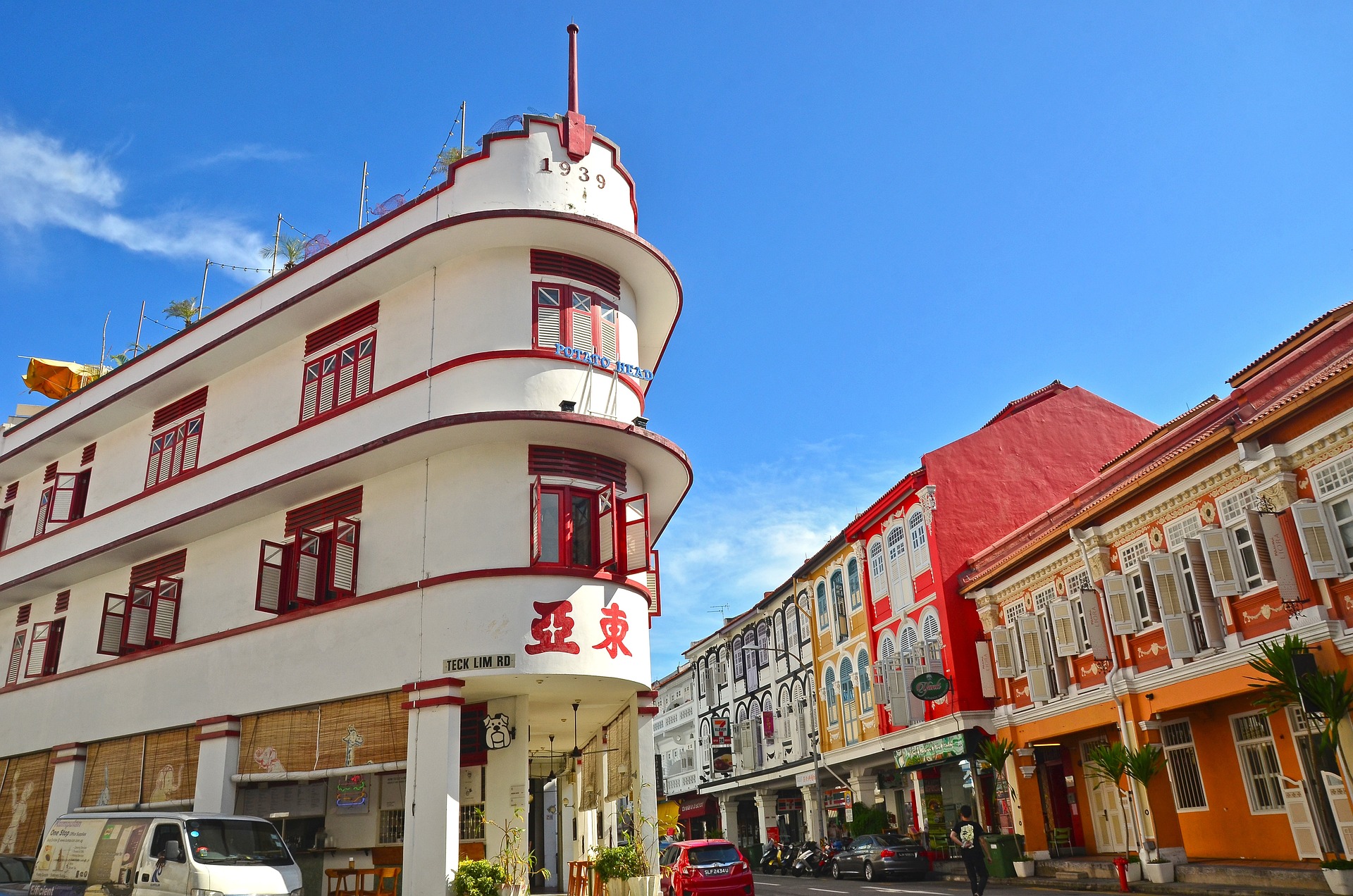Shophouse is a common and unique commercial property type in Singapore and Malaysia. It is the first version of dual-purpose property. Typically, the upper floors for staying and the ground floor for business operations. In the past, a lot of small businesses were operated by families. The upper floors were for the family living space. There was no such thing as “Work-life balance” in the old days. It was all about survivalship. Normally, there is a staircase at the side of the shop and there is a spiral staircase at the back for safety purposes.
For a better understanding of shophouses investment, we exclude HDB shophouses in the following content.
1. Brief history of shophouses
Before the shopping complex and e-commerce was invented, the only place to buy things were at retail shops on the streets or neighborhood. Since the 1970s, air-conditioned shopping malls were built, shophouses were no longer the only place for retail business.
There are many shophouses built before World War 2. These shops’ façades normally come with decorative beautiful tiles and sculpture. These types of old shophouses are now becoming conservation property. The owners are responsible to conserve the outlook with proper maintenance by law. We can see these shops mainly in Chinatown, Little India, Joo Chiat, Jalan Besar, Geylang, Katong, Bugis and Everton areas. These places were developed about 100 years ago. This type of shophouse is like an art masterpiece or antique building. Of course, as the owner of the shophouse, you could always make good of the interior for retail business or rent it out.
For shophouses which were built after WWII, were less artistic. However, these types of shophouses were located in good areas. The majority of them still have good investment value for business and for redevelopment.
2. Property Use of Shophouse.
When we purchase a shophouse, it is crucial to confirm the following:
– The status of the property:
a) Full Residential
b) Full commercial
c) half Residential & half commercial.
d) Full institution (especially property in Geylang)
– With conservation status
– Plot ratio & Maximum building height
e) Seller’s GST status
3. Full Residential Status
The property probably was built for commercial use and it looks exactly the typical conservation shophouse, but if you check the property status on the URA website, it will show the property is residential status. The transaction of the property will be treated as a transaction of a residential, Additional Buyer Stamp Duty (ABSD) is applicable.
4. Full Commercial Status
This type of shophouses is most welcomed by the investors, as there is no need to pay the Additional Buyer Stamp Duty (ABSD). You may further explore what type of business could be carried out in the subject shophouse. Not all types of business are allowed. Normally, shophouses with F&B (food & beverage) approval fetch a slightly higher valuation compared to other in the same location.
5. Half Residential & Half Commercial Status
The ABSD is applicable for the upper floor. Upon transaction, it is required to pay the ADSD for the value of the residential area. For example, a shophouse is selling at $4mil. The upper floor could be only $750,000 due. It is not exactly 50:50. The commercial part of the property normally comes with higher valuation.
6. Full Institution Status
This type of property is rarely sold in the market. If there is any, it will be most likely from the Geylang area. In 2014, Singapore Government rezone Geylang area as Institution area. The rezoning encourages officially registered social entities, eg, religion group, ethnic group, cultural etc, to set up activities & operation centers in Geylang.
7. Plot Ratio & Maximum Building Height
In the old days, due to lack of lift technology, most of the shophouses were two storeys and at the most 3 – 4 storeys. With the increase of plot ratio and building height, you are allowed to rebuild the property for more storeys depending on the height limit. For conservation property, the owner could only rebuild the rear portion and ensure the front facade is well protected.
With the rebuild, the subject property valuation will be increased, as the total floor area is now bigger than the original. The change of value could be quite significant. Sometimes, it could be triple the original price.
8. Seller’s GST status
If you are purchasing the shophouses with your individual name or a newly setup holding company, it is crucial to know whether the seller is a GST registered entity. The GST is applicable for the commercial portion. With GST to be raised to 8% in 2023 & 9% in 2024, the payable GST could be a significant amount.
9. Mortgage for shophouse.
Yes, you can apply for a mortgage for the purpose of investing in a shophouse as a shophouse is considered a quality asset. Some banks could offer up to 80% of the transaction price.
You & your family could combine financial strength for the investment of shophouses. You may initiate a Pooling Co-investment project in RICHCO-SPACE. Invest with other like-minded investors. Click here to find out how our Pooling function could help you.
You may find out your and your co-investor financial strength with our Maximum Borrowing Capacity calculator.




